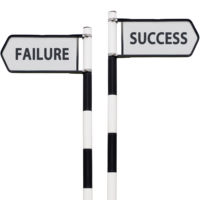The Retail Apocalypse Isn’t Nigh, But Brands Must Adapt Like It Is
by Lindsay Rowntree on 30th Oct 2017 in News


The death of physical retail is overblown, but that doesn't mean that brands don't need to adapt to future-proof their existence. Alyssa Stone (pictured below), director of business development, Drawbridge, writes exclusively for RetailTechNews about what physical retailers must understand to avoid brick-and-mortar collapse.
Imagine walking through a big, empty shopping mall. There is absolutely no one in sight. Every single store is shut. The parking lot is empty. It’s eerily quiet and the hallways echo. It may sound like an apocalyptic dream, but this is what we’ve come to see as retail reality.
Shopping malls across the US have become abandoned haunts and store closings will break a 20-year record this year. According to a Morningstar report, when an anchor store like a Macy’s or JCPenney closes, it triggers a 'downward spiral in performance' of reduced foot traffic and sales for the rest of the mall, and neighbouring shops begin to hurt.
It’s clear that major retailers are facing an existential crisis brought on by the arrival of online shopping and changing consumer habits. However, savvy retailers understand that brick-and-mortar stores can be an essential part of the shopping experience when executed well. Just this past quarter, a slew of retailers actually increased foot traffic and physical sales.
How did they do it? Over the past several years, the rise of sophistical digital measurement and attribution tools have helped retailers gain a crystal-clear picture of the entire customer journey and what drives both store visits and online purchases. Coupled with a nuanced understanding of shifting consumer values, retailers will be able to not just survive the retail apocalypse, but master both offline and online.
Values are crucial to millennials
It’s no secret that more and more people are turning to online shopping. Amazon accounted for 43% of all online sales in the US in 2016. However, the shift to online shopping can’t be explained by consumers simply wanting convenience and speed. Oftentimes, it’s faster to visit a nearby store than wait for two-day shipping. That’s where brand values come into play.
Richard Kestenbaum, co-founder at Triangle Capital and expert in retail M&A, offers this explanation on what appeals to biggest purchasers today:
Millennials want products that are local, companies that are ethical, that run their businesses transparently, that are favourable to the environment, that make artisanal products, that are not sourced globally. They want to know that they’re helping the world with the products they buy.
Enter niche online retailers like Everlane, M.M. LaFleur, Bonobos, and Stitch Fix with nontraditional business models, personal stylists, and slogans such as 'Live with purpose. Dress with ease', or 'Modern Basics. Radical Transparency'. The ethos and values of the brand are key deciding factors when it comes to millennials, who make up over half of all purchases online. So, in today’s internet-driven economy, major retailers have to take a hard look at their brand identity, values, sourcing of materials, and even logistics, and ensure they speak directly to their customers and feel authentic.

Alyssa Stone, Director of Business Development, Drawbridge
Mobile: The underutilised channel
Americans consume nearly six hours of media per day across nearly four digital devices per person – nearly two-thirds of which is spent on mobile devices alone. More than 50% of e-commerce transactions occur on mobile too. However, there is a USD$16bn (£12.1bn) gap between where consumers spend their time and where advertisers spend their dollars. Specifically, marketers are spending a disproportionate amount of their advertising budgets on TV, when more and more of their audience has shifted to mobile.
Many marketers and their technology partners have not yet capitalised on the opportunity to tie the customer journey across all of their internet-connected devices. Marketers continue to approach different channels with their own dedicated (siloed) budgets, as opposed to viewing the entire collection as a shifting mix of smartphones, laptops, TV, tablets, and beyond. Mobile plays a central role in the discovery, research, browsing phases of the customer journey and, today, brands and retailers that neglect this important channel do so at their peril.
In an always-connected world, retailers must focus on moments
Because consumers switch between an average of four devices, brands and retailers must take advantage of moments throughout the day to communicate their messages and values. Imagine you are an outdoor sports brand introducing a new line of hiking shoes for women. You want to speak to women who go from power suits and stiletto heels to anoraks and hiking boots. Given the rise of audience segmentation and targeting technologies, this outdoor brand can zero in on professional women ages 28 to 45 who live within 45 miles of a city.
Every woman who meets the criteria is served one of three ads over the course of a week, delivered to her devices of choice: one during her lunch break before a big board meeting; one on Wednesday evening when she typically purchases supplies for an upcoming camping trip; and one on the Friday afternoon before she heads out for the trail. The retailer can supplement these ads with coupons straight to their email. When she is out shopping, the retailer can close the sale by delivering a personalised invitation to their smartphone to try on the shoe in-store and remind them of the promo code that was sent earlier.
If you read the headlines today, physical retail is on its deathbed. But when you take a closer look, retailer by retailer, the doomsday trends may be overblown. TJ Maxx, for instance, plans to open 250 stores this year. The secret behind their success: a nuanced understanding of how consumers use their devices throughout the day and particularly mobile; what deep set of values that motivate and inspire them; and how they can communicate these values in the moments that matter most.




Follow Fast Growth Brands